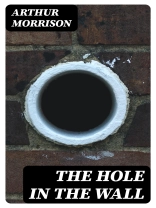In ‘The Hole in the Wall, ‘ Arthur Morrison crafts a riveting narrative set in the gritty underbelly of London’s East End, artfully blending elements of social realism and crime fiction. The story revolves around the character of a young man, Emile, who grapples with the complexities of poverty and moral choice amid the harsh realities of his surroundings. Morrison employs a stark, unadorned prose style that captures the raw atmosphere of a time and place often overlooked in Victorian literature, providing readers with insightful commentary on class disparities and human resilience. Arthur Morrison, known for his keen observations of working-class life, draws upon his own experiences growing up in the East End of London. Having witnessed the struggles and aspirations of the impoverished, Morrison’s writing reflects a deep empathy for his characters and a commitment to illuminating their plight. His background as a journalist adds layers of authenticity to the narrative, as he brings both meticulous detail and an engaging storytelling technique to the forefront. This book is highly recommended for those interested in social justice, Victorian literature, and the exploration of the human condition. Morrison’s vivid portrayal of life on the fringes of society resonates powerfully today, inviting readers to consider the enduring relevance of his themes.
เกี่ยวกับผู้แต่ง
Arthur Morrison (1863–1945) was an influential English writer notable for his contributions to the naturalistic literary movement, which aimed to depict everyday life with unvarnished realism. Morrison’s work keenly portrays London’s East End, providing a gritty picture of working-class life during the turn of the 20th century. His writings often grappled with social issues, a reflection of his background and close ties to the journalistic field where he developed his craft.
Among his many works, ‘The Hole in the Wall’ stands out as a distinguished piece that encapsulates the darker aspects of London’s docklands. Published in 1902, this novel is rich with the atmospheric depictions of criminality and poverty, constructing a compelling narrative that fuses mystery with a poignant social commentary. Morrison’s literary style is characterized by his detailed observation and commitment to portraying his subject matter authentically, aligning him with the prominent figures in the naturalism movement. ‘The Hole in the Wall’ exemplifies these traits and secures Morrison’s place as a prominent voice in London’s literary scene of the early 1900s.












